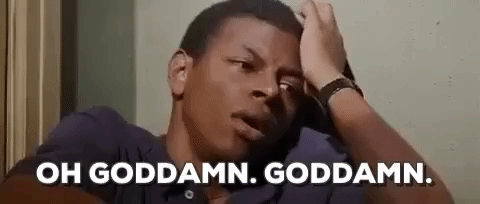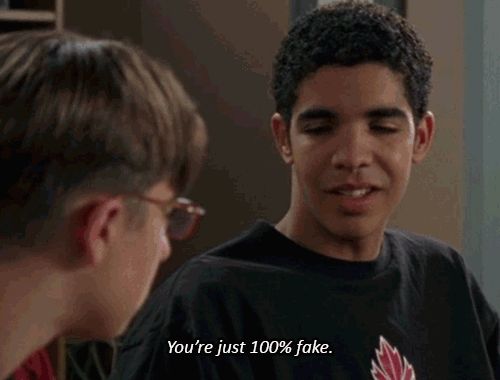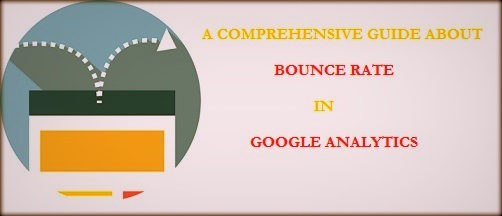Bounce Rate: A Comprehensive Guide 2019
Comprehensive Guide about Bounce Rate in Google Analytics
Bounce rate does not have a clear understanding to many in SEO.
This guide will not only answer “what is bounce rate”. But also throw light on the confusing questions like “what is a god bounce rate”. And the million dollar question “how to reduce bounce rate”.
What does Bounce Rate mean?
As per Google Analytics
“A Bounce is a single-page session on your website.”
Therefore, a Bounce Rate is a calculation of a single-page sessions divided by all the sessions on your website.
Furthermore, in a simplified jargon it can be explained as;
The no. of visits to a landing page by a user without any further browsing.
That means if you have succeeded in attracting traffic to your landing page. But the content is not powerful enough or simply if the visitor gets bored. Then the visitor will leave your website without further browsing.
And then…
…ouch! There goes your bounce rate up.
And friends…it isn’t a good sign generally.
How is Bounce Rate calculated?
Bounce rate can be calculated of the website or of an individual web page as per the need.
Google Analytics calculates:
The Bounce Rate of a Website by dividing the total number of bounces on all the pages in a given time by the total number of entrances on all pages in the same given time.
And
The Bounce Rate of a Web Page by dividing the total number of bounces on a page in a given time by the total number of entrances on that same page in the same given time.

In the above calculations the Bounces refer to the number of single-page visits on a page. And Entrances are the number of times a visitor entered your website through that particular page.
Does Bounce Rate indicate the time spent on the website?
NO.
From the calculations above it is very clearly evident that…
“…the bounce rate on a website has nothing to do with the time spent on the website.”
It is just a misbelief that people have about bounce rate SEO.
But
It is a very strong benchmark to track the quality of the traffic that is directed to your landing page or homepage.
Most generally
If the bounce rate is high, then that means your site’s entrance pages are either boring or not relevant to the visitors.
And this is an alarming sign.
Because…
…the ultimate purpose of a website is conversion. But if your landing page is not able to hook your visitors then sales, conversions or leads are absolutely out of question.
What is a good bounce rate?
Unlike the expectations of getting an exact calculated answer, the accuracy of an ideal bounce rate depends on the intent, industry and design of your website.
High bounce rate is not a bad thing always.
Shocked?
Well it’s shocking but true. It isn’t always bad if your website has a high bounce rate.
For instance:
If the highest number of visitors on your website are on the “homepage” of your site. And your homepage also opens door to other significant pages like services, products etc. Then it is recommended to maintain a low bounce rate on your homepage for more conversions.
But if…
…Your landing page is a contact-page, or a blog or an affiliate landing page or any other single-page content where the visitor’s motive to visit your page is achieved right there. Then a high bounce rate is absolutely normal.
According to a study by RocketFuel, the most average bounce rates varies between 26% and 70% for most websites.
And based on the statistics gathered by them, they created an assorted range of bounce rates.
- 25% or lower: Something is probably broken
- 26-40%: Excellent
- 41-55%: Average
- 56-70%: Higher than normal, but could make sense depending on the website
- 70% or higher: Bad and/or something is probably broken
Neil Patel from Kissmetrics has segregated the average bounce rate percentage as per the industry.
As per which average bounce rate percentage for:
- Retails Sites with targeted traffic – 20%-40%
- Landing Pages with just one CTA like “buy now” – 70%-90%
- Portals like MSN, Yahoo – 10%-30%
- FAQ sites – 10%-30%
- Content sites with high visibility for irrelevant terms – 40%-60%
- Lead Generation services for sales purpose – 30%-50%
So it’s evident from the above that a high bounce rate is not always bad.
Bounce Rate vs Exit Rate
Exit rate is the percentage of exits from a web page. It means that a user may not have necessarily landed on that page. But has browsed his way through the site on that page. And has made an exit from the website from that page.
Exits may have viewed more than one page in a session.
Whereas
Bounce rate is the percentage of users who entered on the site through a landing page, but left without browsing any further on the site.
Bounce rate is always a single-page session.
Reasons of high Bounce Rate
If your website should not have a high bounce rate, considering the above data. Then checkout for these factors for decreasing your website’s bounce rate.
#1. Too many disturbing Pop-up ads
Pop-ups can be great if timed properly.
But a study has shown that visitors leave the site if they have an unpleasant experience of too many pop-ups. Pop-ups can stimulate your sales, or add great number of subscribers to your email list.
But…
…if the pop-up comes just as you entered the site then this can be really annoying.
And can cost you with high bounce rate.
#2. Design that hurts the visitor’s eye
Designing a website is not all about the use of colors.
Instead it is about balancing the colors, readability and navigational architecture in the website.
Some leading designers have mentioned and agreed to this by saying that…
…A great design looks appealing even with Black and White colors.
More importantly, do not just overload your website with colors to make it attractive.
It will be a complete waste if your site’s visitors aren’t able to click on the call-to-action button. Or if they are not able to navigate to the page of their interest.
So, it’s better to keep it simple rather than destroying the website with overdoing of colors, flash and other distracting elements.
Redesign your website if you think that any of the above element matches with your current website.
#3. “What you do” is hidden
What’s the point of having a website if it does not clearly speaks about…
- What are your services or products
- Any new offer
- Or any other information noteworthy
The services or the main information about your website should be “Loud and Clear”.
Don’t make your visitors hop on to find out what your website is all about. Because in this case they’d rather jump on to another site. Instead of locating the information of their interest on your website.
#4. Auto playing Videos
Nobody likes the sudden sound of a video playing on its own when they are scrolling a website.
This is so true.
It is annoying, really annoying. Please stop it right away.
Videos are important for your website. We understand and recommend using them on your website.
But…
…do not set them on an auto-playing mode. Ask for the users consent before playing the video.
Or else, the user will immediately hit the back button and you will have another increase in your website’s bounce rate.
Also, keep a check on the length of the video. Because it has been noticed that if the video is played for long. Then are very high chances of the user stopping the video in between and harming your user retention.
#5. Page Speed
If your website does not load fast then definitely your visitors are going to hop on to other website in no time.
Time is money.
And if your site’s visitors feel they are not investing their time (money) in the right place, obviously they will find someone else.
Keep a check on your site’s loading speed through Google Webmaster Tools. And try to get the loading time in as low as 2 seconds for better user experience.
#6. Non-functional Google Analytics Setup
If you have not set up the Google Analytics properly and not added tracking code to all the pages on your site then it’s going to adversely affect your bounce rate.
You can learn about the right way to set up Google Analytics by this guide from Google.
#7. Low quality Content
By low quality we are targeting two problematic areas in content:
- Bad content (words)
- Good content but not optimized for reading
Both the factors are equally responsible for high bounce rate. Writing for a website is very different from writing for a book.
It cannot be plain.
You have to break the content with images or headings to keep the visitors hooked to your website. And intrigue them to read more from the web pages.
#8. Empty Page or Error in loading
If you notice a strange behavior in your site’s crawling that the visitors are on your website for just a few seconds.
Then it’s quite possible they have hit an empty page or a page with 404 error or a page which was not able to load properly.
#9. Misleading Meta Tags
You can fool the user by adding misleading meta title and description. But once they visit your page and notice this is not what they want.
Then they will immediately bounce back.
#10. Non-responsive design
A mobile friendly website is the need of the hour.
Because we all will agree to the fact that most of the users visit a website from their smartphones or tablets. What if your site isn’t as good on mobile, as it is on desktop?
You will lose potential clients.
Open your website on a mobile device and see if there is anything to worry about.
If you are already thinking about website redesigning then now is the time to make your website responsive too.
#11. Backlinking from a low-quality and irrelevant site
Lastly, if you have tried everything but still getting a high bounce rate.
Then this can be due to…
…the backlink you are getting from a low quality and irrelevant site.
This is because the referring site will be directing similar low quality visitors to your site. Or the anchor text in the referring site could be misleading.
How to lower Bounce Rate?
Now that we the possible reasons for a high bounce rate. Let’s see what should be done to decrease the bounce rate of a website.
#1. Analyze if the bounce is actually a bounce.
Not all bounces on the website can be considered as a bounce.
Confused?
Let me explain.
If a visitor visits a news or a blog website. Then the aim of the visitor will be to read the news and exit.
But the Google Analytics will consider this as a bounce. Since the visitor made the exit from a single-page visit. Ideally this isn’t a bounce exactly because the purpose of the visitor is achieved in the single page. Then why would he browse any further.
Unfortunately Google Analytics will show 100% bounce rate for this scenario.
It’s noteworthy;
“that when a visitor converts on your website (by hitting the CTA), then it should not be counted as a bounce”
Because the prime aim of a website is to get conversions and sales, not to optimize the bounce rate. Right?
This is why it is important to adjust the bounce rate for your website so that it does not show the uncalculated rate of bounce.
You can start by;
“analyzing the time spent on the web page”
This way you can get the actual bounce rate.
#2. Do not encourage low-quality traffic
If you are getting low-quality or irrelevant traffic which has nothing to do with your service or product. Then it is obvious they visitors will leave your website as soon as they find out it’s of no use to them.
And hence it will increase your bounce rate.
Better find out and stop the source of the low-quality traffic and remove toxic backlinks to your website.
Set up a new marketing strategy and build links with only the targeted keywords or landing pages to bring the bounce rate down.
#3. Keep the promise you made to the visitors
If you break the trust of the visitors, they are going to bounce back for sure.
To further explain:
If your landing page has a little something for you which says “download the free SEO guide”.
But if…
…on clicking that link it takes you to the contact page instead of the free download. Then definitely the visitor will feel cheated and will bounce back.
Never ever do this.
Do not fool the users. If you promise anything on your landing page then fulfill it. Keep in mind that your landing page’s call-to-action should be relevant and genuine.
#4. Strategize your landing page smartly
The users most probable won’t have the whole time in the universe to go through your landing page.
For this reason it is advised to place the content on the landing page smartly. Such that it covers all the information.
But at the same time doesn’t take much of the visitor’s important time.
#5. Track Flash based content with Virtual Pageviews
If your landing page is based out of Ajax or Flash then a lot of user activity like downloading, clicking on a link, viewing a video, logins etc. will be happening on a single page.
So there will be no need for the visitor to scroll any further.
Therefore an increase in the bounce rate for that page/website.
In this case the bounce rate will be 100%. Unless it is tracked by virtual pageviews or event tracking.
#6 Landing Page should be Perfect
Yes. It has to be perfect if you want a lower bounce rate.
“As per a study a user decides in less than 8 seconds whether or not he wants to stick to that website.”
The following Do’s are necessary for your landing page design.
- Fast page load speed
- Easy navigation
- Responsive website
- High quality content
- Content should be readable
- Formatting (bold, italics, heading, paragraphs etc) should be in place
- Avoid auto-paying video and auto-downloading links
- Use clean background colors
- The colors on website should be attractive, but not very loud
- Pop-up ads should be timed properly
- The “next step” should be clear
- CTA or call-to-action should be properly placed
- Do not ask for unnecessary information from users
- Purpose of the page should be very clear
#7. Grow a need in the users to browse further
Yes we have agreed earlier in this post that pages like news or blog are likely to have high bounce rate.
But this is not necessary.
You can turn the wheels to your benefit here also.
Intrigue the users to browse further on your website to get more interesting information.
To elaborate further with example:
If a website is about a technical blog, and the user has landed to the information of his choice. Then just when the post ends treat him with more similar posts links which may be of interest to the user.
This way you have reduced the bounce rate and also supplied more useful information to the user.
Hence, a win-win situation for both.
#8. Know it from the horse’s mouth
If you feel you have done everything and still you are not able to identify what’s the problem. Then it’s better to play ball by ball. That is examine each landing page individually.
One of the way to do is by fixing a thumbs-up and a thumb-down button in the end of a landing page with no log-in required.
Now if the thumbs-down are more than the thumbs-ups, then you know it right that the quality of content in not matching the standard. I mean what’s the point if the users are not loving it.
So improve the content quality on your landing page and reduce the bounce rate.
Conclusion
A high Bounce rate is not always bad. But you need to be wise enough to calculate and analyze if the bounce rate of your landing page is good or not.
We have covered the reasons and the ways to tackle the bounce rate factors which may affect the conversion ratio of your website.
Contact our Google Analytics expert to analyze your site’s performance
15 Top Reasons Why Visitors Leave your Website Too Soon!
Know the Top 15 Reasons why people leave your website soon
If seeking Attention is difficult, then creating interest is rare on the Web.
When you build your website from any professional website design company, you have the criteria of grabbing the attention, on your checklist. Right?
So now that you have the attention of the desired web users, it is your primary job to create engaging content for the users to develop their interest.
The content on your site should be easy to navigate and simple to understand. If at all it is confusing or clichéd, the user will get either bored or frustrated and will take the exit door.
In the initial web surfing days, “if you build it (website), it will work” tune worked. But now, to swing in thoroughly and to get the visitors stick to your site is a whole new episode. You have to set a combination of a various factors to generate interest in the visitors.
I have listed the top 15 reasons to be worked on if you want visitors to stay for longer time on your site.
People might be leaving your website because of these reasons:
1) Outdated Design
Even though looks are deceptive, but they also cast the first impression which typically is the last impression. Designs which were a hit 10 years back are looked as outdated and uninteresting now.
Make sure when a visitor visits your website he stays there, at least for the strong and attractive visuals of your website. Of course, this won’t be the only thing to keep your visitors hanging to your website. But it is a great valid point to begin with.
Website redesigning is an important aspect to keep at pace with the changing trends. Nobody would be interested in a clichéd design, so obviously they will leave your website soon.
So, update or redesign your website to match the current trends or to give it a fresh look.

Source: https://goo.gl/KF7NrX
2) Do not Overdo Your Content
The fonts, color, design everything matters when you style your content. But some designers overdo the styling which gives a very unprofessional and cheap look to your website. And trust me it does not give a very positive feedback for your website/company.

Source: https://goo.gl/BYcmgf
Style your content but remember it should not hinder while reading the text on your website.
The fonts you use should
- Be easily readable
- Have high contrast color combination
- Clean presentation
One font which you should absolutely avoid is “Comic Sans”. As an alternative, choose ornamentation-free serif or sans serif fonts for best results.
And for font size, it’s better to opt for larger fonts so that the visitors have a great experience and ease to read while they are visiting you on a desktop or a mobile device.
3) Outdated Plugins
If you are still using flash to display the most important message for your visitors, then my dear friend you will be waiting for forever. Because the users have no time or interest to install the updated versions of Flash plugins to view the content of your website.
Result; the bounce rate increases and your conversion rate will fall down further.
If your website or posts demand videos or animations then it’s better to use HTML5. In addition to this, include a summary or a transcript of the video for the users who can’t or don’t want to play the video. This is also beneficial to add on to the SEO benefits of your website.
4) Too many Ads
It would not be possible to run an ad-driven model website without ads. Comprende!
But it is totally unnecessary and very frustrating to place the ads all over the website in a greed to make more money. This is a very thoughtless way as instead of making you win (by making money), it will make you lose (as visitors will leave your site early).

Source: https://goo.gl/qK6GXf
If a visitor visits your website then he is there for some particular information. But if it becomes difficult for the visitor to go through that information because of ads hanging everywhere, he will leave the website in no time.
Running the ads is fine. But see to it that it’s not covering the entire volume of your website. Ads should not be the first thing that a visitor notices when he visits your website. Rather it should be the real content of your website which grabbed his attention.
5) Auto-play Videos/Animations
It is very annoying (and sometimes embarrassing) when a video on a website auto-plays. The immediate reaction to this unwanted, forced auto-play would be – hitting the back key.

Source: https://goo.gl/Wvj4q3
Never set the videos on auto-play mode. Allow the user to choose whether he wants to or not play the video. Doing this you also give a certain level of control to the user which is by and large loved by all.
This way you earn some brownie points and the thus spray some glue to the visitor to stick to your website.
6) Site’s navigation
Do not take this lightly.
If your site has a confusing navigation and multiple sub-levels then the user will not waste his time to find the page he is looking for.

Source: https://goo.gl/xnHqN7
Think of this as a scenario where you land on the website of your choice for the desired information. Now you are struggling to find the piece of information for which you visited that website but could not find it. What would you do?
Leave it, right?
This is why a site’s navigation has to be clear, precise and easy to locate. Reorganize your site’s navigation levels to match a user’s expectation. If you are unsure of rearranging your site’s navigation yourself, contact a good website design company and they will help you out.
7) Lengthy and Unnecessary Registration Forms
Creating gated content is great for driving genuine leads to increase the sales of the company. But doesn’t it get annoying when you have to fill lengthy registration forms for accessing everything and anything on the website? It sure does irritate me.

Source: https://goo.gl/daPQox
Do create gated content but stick to its actual purpose. Do not just restrict everything from a user. He will run away.
Protecting important documents like whitepaper, PDFs, or some videos is fine otherwise keep your website accessible to all.
Another important aspect is Registration forms. Make it a point to keep only those fields which are actually important. Other than that do not waste your as well as your visitor’s point. More important, the will not only skip registration, they will take an exit door immediately.
So avoid pointless and prolonged registration forms.
8) Slow Loading Speed
According to Hobo Web, the page loading speed difference (in seconds) hugely impacts the percentage of page abandonment.

Do not ignore this or better make this your priority. Because even after attracting users, your website takes too much time to open then no matter how good your website’s content is, user will take a U-turn.
9) Irrelevant and unappealing offers
I have noticed sometimes companies give all the attention to the graphics and designing of the offer. But this should be absolutely discouraged.
Visuals are great, but what inside it is of greater value. It should be designed and explained in a way to attract the customers. If at all you experience that visitors are coming to your website but leaving soon. Then this definitely shows a lack of connection between them and the offer.
Create an appealing offer on a landing page with a connecting call to action button, explaining the visitor the next step and the resulting benefits of taking that step.
10) Vague product/offer benefits
If the product benefits which you display on your website are not appealing and clear then obviously it would not take more than some seconds for the visitors to move away.
Think through the typical instance of the Apple iPod. The iPod features could have been in two diverse ways, like below:

Image Credit: Help Scout
The smarter way to display the features is the second one. Because iPhone buyers will not care much about 1GB or mp3. But the feature of carrying 10,000 songs with them is what will attract them.
See the difference?
This is a crucial understanding to improve the conversion ratio.
11) Missing Call-to-action button
According to smallbiztrends.com, 70% of small business B2B websites don’t have CTA or Call-To-Action buttons.
Isn’t this strange?
Why will the visitors be interested in your products or services if you aren’t even asking them to buy it from you? The fact that the CTA has to be compelling and relevant comes secondary. But more important is for you to have a CTA button after every products page, blog page or any other relevant page.
12) Fake landing page promises
Never ever create fake promises on the ad just for the sake of driving the visitors to click on your landing page. Even if you get successful on getting the visitors to your landing page, it won’t be of much use to you.

Source: https://goo.gl/N3jJ9x
Just as they find out that the information rolled on the landing page is not relevant nor does it solves their purpose they will take no time to hit the back button.
Your ultimate goal is sales, which will only happen when you share actual offers or information with the visitors. Do not confuse traffic with conversions.
13) Website is not responsive
According to official Google statements, more than 50 percent of search queries globally now come from mobile devices.
Now imagine if your site is not responsive how much potential sales/traffic/conversion you would be losing.
It is imperative for all the small, medium or large business to have a responsive website if they aim for the ultimate goal – high ROI.
14) Not using Exit Intent Technology
As per omniconvert.com the ‘Exit Intent Technology‘ can be defined as an intelligent technology or an innovative tool designed to help marketers turn and transform their abandoning website visitors into paying customers.
The website owners can make a final try to convince the abandoning website visitors to stay back and reconsider what the website has to offer.
By using a tool track if the visitor is about to leave your website. Just when he is about to click the back button present a message or an offer to make them stay on the website to learn what the website can do for them.
15) Website hacked
Everything fine still losing on the numbers?
Check your website’s admin thoroughly. It might be hacked. According to Forbes contributor James Lyne, an estimated 30,000 sites are compromised every day.
If it is not possible for you to observe your website code every day. Then introduce a monitoring tool to retain the most important factor of a user’s trust that’s essential for website conversions.
By working on the above issues you will most likely see an increase in the conversion ratio and a decrease in the bounce rate. But still if you cannot make it through contact a professional SEO company to dig in deep.

